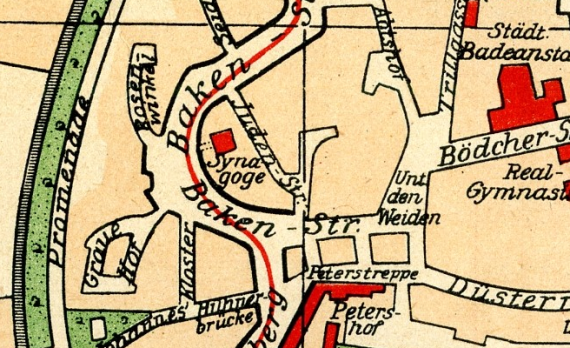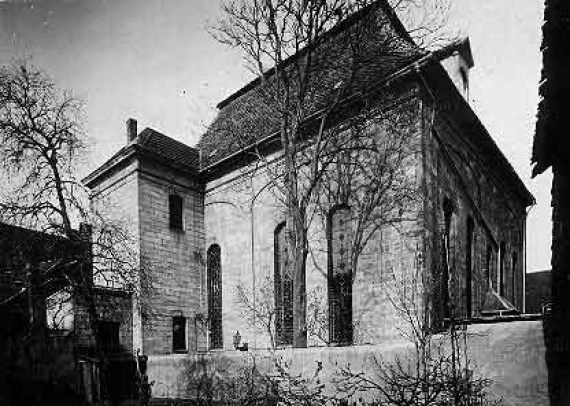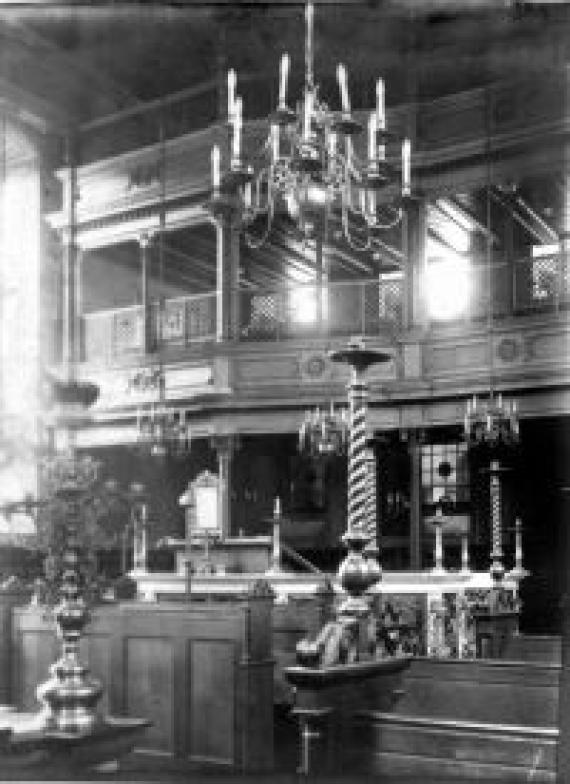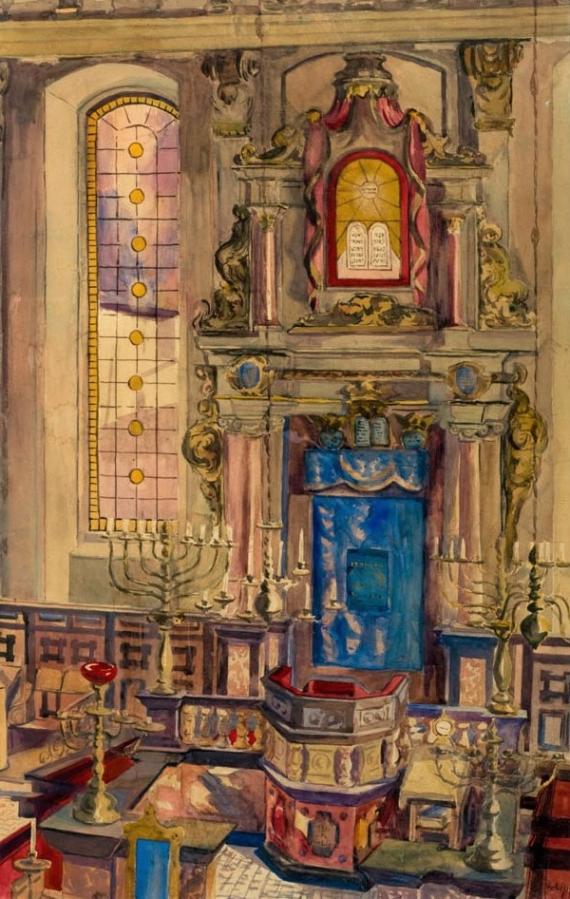Bakenstraße 56 (Hinterhof)
38820 Halberstadt
Germany
On the basis of a donation by the Halberstadt court factor Berend Lehmann (1661-1730), the magnificently furnished Baroque synagogue of the Halberstadt community was inaugurated in 1712, in the backyard area of Judenstraße 24-27 (on the site of two previous buildings). In contrast to the first public synagogue in the Prussian royal city of Berlin (1714), the Halberstadt house of worship visibly towered over the surrounding buildings from afar. As the first synagogue in Germany, it followed the architecture of its time. The bima for reading the Torah was located in the center, and the two-story women's gallery was integrated into the synagogue room. The entrance was located on Judenstraße.
While Lehmann's congregation still numbered about 1,100 members (10% of the total population) during his lifetime, it shrank to a good third by 1840, but with the formation of Neo-Orthodoxy in Halberstadt it grew again almost to its old size (1927: about 1,000 members). The entrepreneurial family of Aron Hirsch (1783-1842), which also financed the renovation and reconstruction of the old synagogue in 1879, played a significant role in this. On the west side, towards Bakenstraße, a neo-baroque reception hall and a staircase for the women's gallery were added. Access was now possible through the courtyard gate of the cantor's house (Bakenstraße 56).
In the November pogrom of 1938, the synagogue was looted and the rich interior decoration largely destroyed. Up to 90 (!) Torah scrolls were publicly burned on Bakenstraße, but the building was not set on fire - to protect the surrounding half-timbered houses. Instead, on November 18, 1938, the Halberstadt building police ordered the complete demolition by spring 1939 - at the expense of the Jewish community. Only a wall remnant of the reception hall remained standing to support an attached stable.
Only after redevelopment of the adjacent half-timbered houses on Bakenstraße and Judenstraße (after 1990) was the neglected synagogue area also transformed into a memorial and "DenkOrt" by the artist Olaf Wegewitz in 2008.




